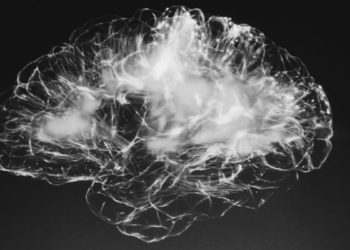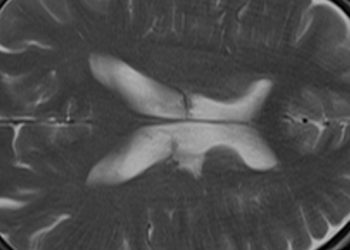Crinecerfont facilitates glucocorticoid dose reduction in pediatric congenital adrenal hyperplasia
1. In this randomized controlled trial of pediatric patients with congenital adrenal hyperplasia (CAH), it was found that treatment with crinecerfont lowered androstenedione and serum 17-hydroxyprogesterone levels.
2. Treatment with crinecerfont reduced the need for supraphysiologic glucocorticoid doses.
Evidence Rating Level: 1 (Excellent)
Study Rundown: Classic CAH, caused by a 21-hydroxylase deficiency, reduces cortisol and aldosterone synthesis. The resulting lack of negative feedback causes excessive adrenal stimulation, leading to elevated androgen production. In childhood, this hormonal imbalance can result in several complications, including central precocious puberty, early growth plate fusion, and menstrual irregularities. Hydrocortisone is currently the standard treatment for pediatric CAH. However, prolonged use of supraphysiologic doses of corticosteroids has been associated with stunted growth, as well as an increased risk of metabolic syndrome and cardiovascular diseases. Crinecerfont, a corticotropin-releasing factor type 1 receptor antagonist, has been shown to reduce levels of corticotropin, 17-hydroxyprogesterone, and androstenedione. This study evaluated crinecerfont’s efficacy in lowering androstenedione levels and reducing the need for high-dose glucocorticoids. The results indicated that crinecerfont treatment was superior to placebo in reducing androstenedione levels and allowed participants to lower their glucocorticoid doses closer to physiological ranges. However, limitations of the study included the necessity for participants to be on supraphysiologic glucocorticoid doses for enrollment, the limited number of participants under four years old, and a relatively short follow-up period. Despite these limitations, the findings suggest that crinecerfont therapy effectively reduces excess androgen production and facilitates a reduction in glucocorticoid dosing for pediatric CAH patients.
Click here to read the study in NEJM
In-Depth [randomized controlled trial]: This phase three, randomized controlled trial evaluated the efficacy of crinecerfont, a corticotropin-releasing factor type 1 receptor antagonist, in reducing excess androgen production in pediatric CAH and facilitating a reduction glucocorticoid dosing. Participants, aged 2 to 17 years, were included if they had elevated androstenedione levels above the midpoint of their reference range, 17-hydroxyprogesterone levels greater than twice the upper limit of normal, and were receiving more than 12.0 mg/m²/day of hydrocortisone dose equivalents. Exclusion criteria involved using long-term glucocorticoids to treat a condition other than CAH. Of the 103 participants randomized, 69 were assigned to the crinecerfont group and 34 to a placebo group. By week four, the crinecerfont group demonstrated a significant reduction in androstenedione levels from baseline (-6.9 nmol/L), while the placebo group showed an increase (2.5 nmol/L), with a least-squares mean difference of -268 (p<0.001). Additionally, the crinecerfont group experienced a notable decrease in serum 17-hydroxyprogesterone levels from baseline, which was not observed in the placebo group (least-squares mean difference, -6421; p<0.001). From weeks four to 28, glucocorticoid dosing was reduced with a target decrease of 1.0 to 4.0 mg/m²/day, provided that androstenedione levels did not exceed 120% of baseline. At week 28, the crinecerfont group achieved an 18% reduction in glucocorticoid dosage, while the placebo group showed a 5.6% increase (least-squares mean difference, -23.5; p<0.001). There were no significant differences in mild adverse events between the groups; however, 12% of the placebo group experienced serious adverse events compared to 1% in the crinecerfont group. These results suggest that crinecerfont effectively lowers elevated androstenedione levels and reduces the need for high glucocorticoid doses in pediatric CAH.
Image: PD
©2024 2 Minute Medicine, Inc. All rights reserved. No works may be reproduced without expressed written consent from 2 Minute Medicine, Inc. Inquire about licensing here. No article should be construed as medical advice and is not intended as such by the authors or by 2 Minute Medicine, Inc.






![Type I diabetes not associated with early menopause [OVADIA study]](https://www.2minutemedicine.com/wp-content/uploads/2014/12/diabetes1_edited-75x75.jpg)
